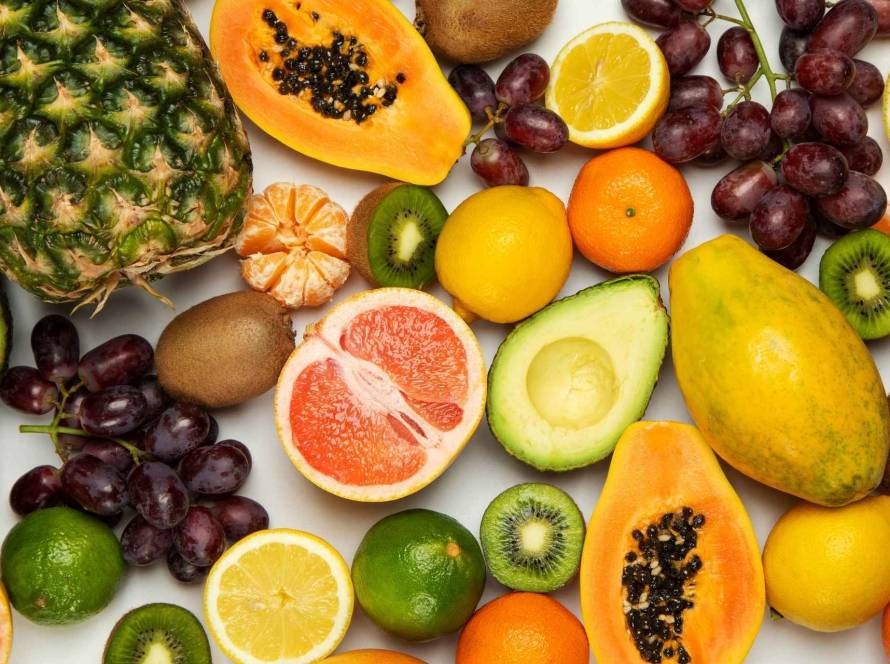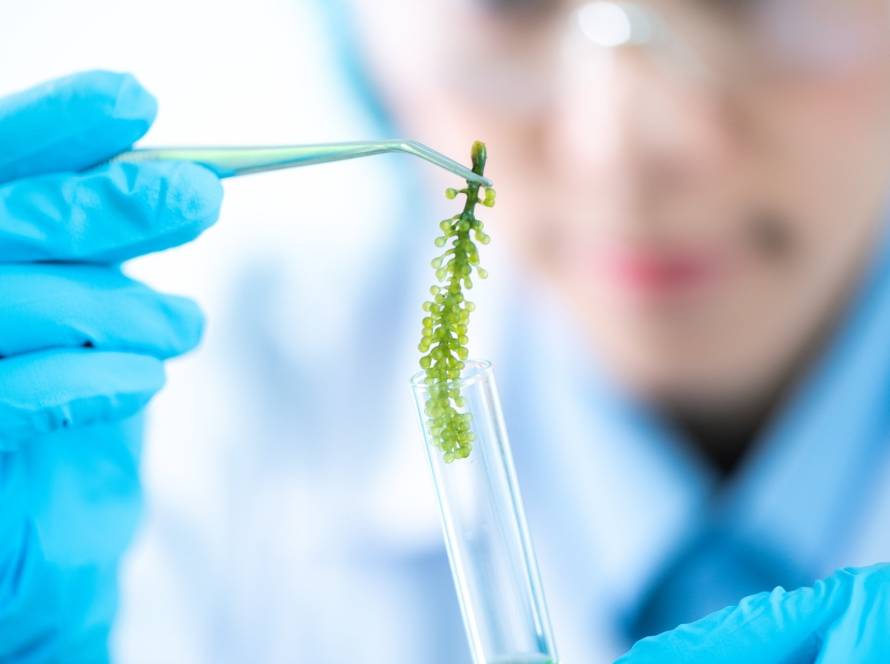Marine natural products are bioactive compounds that show great promise in medicine and longevity research. The oceans cover more than 70% of Earth’s surface and host an incredible diversity of life.
Let’s take a closer look at these oceanic treasures, their sources and their role in advancing health sciences.
What are natural compounds from marine organisms?
The ocean holds an immense treasure of unexplored chemical diversity. Marine natural products are bioactive compounds produced by marine organisms.
Definition and biological role in marine organisms
Marine natural products (MNPs) are powerful bioweapons that come from an evolutionarily optimized biosynthetic machinery. These compounds play vital biological functions in their host organisms, especially as defense mechanisms against predators, competitors and harmful microorganisms. Chemical defense becomes essential for sessile and soft bodied marine invertebrates that can’t escape from threats.
Marine environments create intense ecological pressures, competition for space, surface fouling, predation and reproductive challenges. These pressures guide the development of unique secondary metabolites with diverse biological activities. Marine organisms use these compounds to:
- Protect themselves from predators;
- Prevent colonization by harmful microbes;
- Communicate with other organisms;
- Adapt to extreme environmental conditions.
Primary sources of marine natural products:
- Marine invertebrates (sponges, tunicates, bryozoans, mollusks);
- Marine algae (especially red algae);
- Marine microorganisms (bacteria, fungi, cyanobacteria).
About a quarter of isolated MNPs show interesting biological properties. These include antiproliferative, antimicrobial, anti-inflammatory, anti-coagulation, analgesic, neuroprotective and cardioprotective effects. Cytotoxic and anticancer properties make up most of the reported biological activities of MNPs.
How they differ from terrestrial natural products
Marine natural products have unique characteristics that make them different from their terrestrial counterparts (TNPs). The unique evolutionary pressures of marine environments create these differences and add to their pharmaceutical potential.
Research shows that 71% of the molecular scaffolds in the Dictionary of Marine Natural Products are only utilized by marine organisms. Marine organisms also show more significant bioactivity than terrestrial organisms.
Key Structural and Chemical Differences:
- Size and solubility: MNPs are often larger than TNPs and have lower solubility. Their scaffolds are bigger, with more long chains and large rings;
- Ring structures: MNPs feature more long chains and large rings, particularly 8 to 10 membered rings. Their scaffolds are longer with ester bonds connected to 10 membered rings. TNP scaffolds are shorter with more stable ring systems;
- Atomic composition: MNPs have more nitrogen atoms and halogens (especially bromine) but fewer oxygen atoms than TNPs. The high concentration of halides in seawater and specialized halogenation enzymes in marine organisms explain the presence of halogens;
- Biosynthetic pathways: the differences in atomic makeup suggest that MNPs might employ more diverse biosynthetic pathways than TNPs;
- Drug-likeness: Naïve Bayesian drug likeness classification models indicate that while most compounds in both categories are drug-like, MNPs have a slight edge over TNPs [4].
These unique features make marine natural products valuable for drug discovery. The Dictionary of Natural Products shows that 40% of the chemical scaffolds represent new chemical space not found in synthetic compounds. The marine habitat produces bioactive secondary metabolites that could treat several diseases through novel mechanisms of action.
Marine derived drugs show a high success ratio compared to synthetic compounds and many promising candidates are in clinical trials. This makes the marine environment a rich source for finding novel drug leads with distinct modes of action.
Where do marine natural products come from?
Marine ecosystems are amazing reservoirs of biological and chemical diversity. The ocean’s big biodiversity has created specialized chemical defenses and signaling molecules that became great resources for scientific research and drug development.
Sponges, tunicates, mollusks corals
Marine invertebrates make up much of the marine natural products we’ve found. Scientists pay special attention to marine sponges (Porifera) because they contain many bioactive chemical components that could work as medicines. Scientists found nucleosides spongouridine and spongothymidine in the marine sponge Cryptotethya crypta. This discovery led to ara-A (antiviral) and ara-C (the first anticancer drug from marine sources).
Tunicates (sea squirts) make peptides and alkaloids as their main chemical components. These organisms, with about 3,000 known species, create a hard exterior polysaccharide “tunic” and stick to rocks in high current areas. The microbes living with them produce compounds that fight bacteria and cancer effectively.
Corals build reefs and belong to the phylum Cnidaria. They make calcium carbonate to create rigid skeletons. Scientists once overlooked benthic cnidarians for natural product development, but these organisms have given us valuable compounds like collagens and fatty acids.
Cone snails, a type of mollusk, have provided valuable compounds for drug development. Sea cucumbers (Echinodermata) help wounds heal faster because they contain lots of proteins, glucosaminoglycans and fatty acids.
Marine bacteria, fungi and cyanobacteria
Marine microorganisms remain largely unexplored for natural products. Scientists didn’t value them at first and made negative comments about microbes in the sea. The field of marine natural products research grew and scientists started to study bacteria, fungi and cyanobacteria more deeply.
Marine bacteria and fungi that live in tough conditions (cold, dark, high pressure environments) create fascinating and complex natural products.
Marine bacteria often team up with larger organisms like corals, fish, sponges and algae. These organisms surfaces give bacteria a home and these bacteria often make bioactive chemicals. True marine bacteria offer a wealth of new bioactive compounds, though scientists only described 179 novel bioactive compounds from marine bacteria in 2016.
Marine fungi give us healthy substances like antimicrobials, antioxidants and anticancer chemicals. Scientists have only described 5% of the worlds fungal taxa so far.
What are the health benefits of marine natural products?
Marine organisms contain rich chemical diversity that has led to powerful therapeutic applications in many disease areas. These compounds provide unique ways to fight disease that land based sources can’t match. Scientists have already developed FDA approved cancer treatments and new pain management solutions from these marine sources.
Anticancer agents: trabectedin, eribulin, plitidepsin
The oceans depths have given us several breakthrough cancer therapies. Trabectedin (Yondelis®), which comes from the Caribbean tunicate Ecteinascidia turbinata, earned approval to treat soft tissue sarcoma, according to research. This compound binds to guanine in DNA’s minor groove and disrupts transcription factors and DNA repair mechanisms. It works especially well against myxoid liposarcoma by suppressing the FUS-CHOP transcription factor.
Scientists created Eribulin from halichondrin B, found in the marine sponge Halichondria okadai. It works differently by blocking microtubule growth without affecting breakdown. The drug not only kills cancer cells but also changes the tumor’s environment. It reduces oxygen deprivation and helps blood flow better.
The tunicate Aplidium albican produces plitidepsin, which fights multiple myeloma effectively with lower toxicity than other treatments.
Pain relief and neurological support: ziconotide, bryostatin
Ziconotide comes from the cone snail Conus magus and serves as a groundbreaking non-opioid pain reliever. Unlike opioids, it blocks N-type voltage-sensitive calcium channels in the spinal cord. This stops pain signals without causing addiction or tolerance. The drug must go directly into the spinal fluid because it can’t cross the blood brain barrier naturally.
The marine invertebrate Bugula neritina produces bryostatin, which shows promise in treating several brain conditions. This protein kinase C activator has helped in early studies of Alzheimer’s disease, stroke, brain injury and multiple sclerosis. Tests showed that long term bryostatin treatment helped improve thinking and behavior in mice with Fragile X syndrome and the benefits lasted.
Antiviral and antimicrobial compounds
Scientists have found many antiviral compounds in marine life that target HIV, herpes simplex virus (HSV) and influenza. To cite an instance, see the alkaloid lamellarin α 20-sulfate from an unknown ascidian that stops HIV integrase from working in vitro. Brown algae produce sulphated polymannuroguluronate, which fights HIV by blocking viral gene products.
Marine derived supplements and antioxidants
Marine organisms are a great way to get nutrients and antioxidants beyond medicine. Crustacean shells produce chitosan, which fights cancer, diabetes and harmful oxidation. Seaweed contains powerful antioxidants, including phenolics, polysaccharides and pigments that reduce oxidative stress.
Brown seaweeds produce fucoidan, a sulfated polysaccharide that fights cancer in various cell types. People can safely take up to 250 mg daily as a supplement, a according to studies. These supplements from the sea offer new ways to extend healthy life through multiple biological pathways.
What are the challenges and future directions?
Marine natural products show great promise, but they face major hurdles in their path from ocean to clinical use. Scientists must overcome these challenges to tap into their full therapeutic potential.
Sustainability and supply limitations
The supply problem stands as one of the biggest roadblocks in developing marine natural products. Most promising compounds exist in tiny amounts. Scientists need huge amounts of source organisms to extract these compounds, which proves costly and harms the environment.
Wild harvesting puts biodiversity at direct risk and can’t provide reliable access to these valuable compounds. Scientists need specialized equipment and substantial resources to explore extreme environments. The problem gets worse because only about 5% or less of marine bacteria grow in standard lab conditions, which limits access to their chemical diversity.
Biotechnological solutions: fermentation and aquaculture
Scientists have developed several ways to solve these supply issues:
- Total chemical synthesis creates unlimited compound quantities, but complex structures make it expensive;
- Aquaculture/mariculture has produced gram scale quantities of compounds like bryostatin by growing Bugula neritina;
- Fermentation helps produce large amounts of compounds from lab grown marine microorganisms;
- Metagenomics finds biosynthetic gene clusters in uncultured microorganisms;
- Heterologous expression moves biosynthetic pathways to suitable host organisms for large scale production.
These biotech advances are transforming the field. Today’s synthetic chemists can build very complex molecules that match natural structures. The antibody drug conjugate platform has changed everything by delivering toxic marine compounds directly to cancer cells while reducing overall exposure.
Emerging research in longevity and age related diseases
Marine natural products show great potential in treating age related conditions. New studies show marine peptides can affect various aging markers through different molecular mechanisms. These compounds work by:
- Reducing excessive oxidative stress;
- Making the immune system work better;
- Boosting mitochondrial performance;
- Changing insulin-like growth factor signaling pathways;
- Affecting gut bacteria linked to aging.
Marine natural products offer a rich source of therapeutic potential that remains largely untapped. Only a small fraction of marine species have been studied and our oceans remain the planet’s greatest unexplored pharmacological frontier. Marine derived compounds have shown remarkable results in multiple disease areas.
Biotechnological capabilities and our understanding of marine ecosystems continue to grow rapidly. Marine natural products will likely become even more vital in developing new therapeutics for age related diseases. The ocean’s remarkable biodiversity, shaped by millions of years of evolution under extreme conditions, keeps yielding compounds with mechanisms unavailable from land based sources. These discoveries offer promising solutions to some of humanity’s toughest health challenges.
Read more about:


